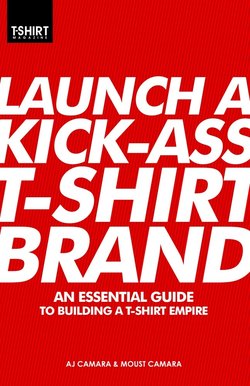Читать книгу Launch a Kick-Ass T-Shirt Brand - T-Shirt Magazine - Страница 21
На сайте Литреса книга снята с продажи.
Karlo Reyes’ Research Process and Brand Progress
ОглавлениеIn today’s street culture movement, it’s difficult to know which brands are relevant when it comes to the concept and meaning behind each one of them. Jeepney is well known for its bold graphics and edgy concepts in the streetwear market. However, most people don’t realize that the concept behind the brand has deep artistic roots (Jeepney Trucks) and cultural (Filipino) relevance which inspires its designs and overall brand strategy.
At first glance, it’s not easy to make the connection between a Jeepney and fashion. That’s why I wanted people to know why I chose the name and why it’s relevant to everyone that wears the product.
When I chose a name for the company, it was important that the name was not only unique, but artistically and culturally meaningful. To me, a Jeepney embraces the artistic element of street culture simply because as artists we all want to showcase our talents in a unique way for the world to see. The most unique feature of the Jeepney is that each vehicle is different in design and concept. What were once plain American GI Jeeps left over in the Philippines after World War II have since been transformed into urban art forms that showcase each owner’s individual style.
As for the cultural relevance, at the end of the day, if all of our customers are able to look fly and learn a little about the Filipino culture through the Jeepney brand, then we feel like we accomplished some sort of educational purpose—even if it takes edgy graphics in our designs to get it done.
I am a graphic designer by trade and had a graphic/web design company back in the day. I started Jeepney in 2003 when I did a few t-shirts for a community festival. I ended up selling out of all the tees, so I decided to keep doing it. I brought on my business partners—Rex Korrell late in ‘03 to help with the operations and the sales side; David Gavino for design help; and Simpson Wong as the CFO—and the rest is history.
When we first started, there wasn’t a lot of information available on how to create a t-shirt brand, so we basically made things up as we went. We also asked our screenprinters for a lot of advice. Fortunately, we found a mentor, Mel Matsui, who was a seasoned veteran in the apparel industry to guide us with the basics of the industry.
From there, we created an online store, sold at events, and visited MAGIC (the largest apparel wholesale show in the US). Then, in 2005, we did the POOL Tradeshow in Vegas and the Agenda Tradeshow in San Diego, which exposed our brand to the large mainstream stores. From there, we started exhibiting at MAGIC, and everything just snowballed and we had a full-time business. We got into stores like Karmaloop, Metro Park, Urban Outfitters and many Japanese and European stores. We also did a lot of important collaborations, which brought the brand tons of exposure.
Over the years, I have been involved with plenty of other brands and have seen companies start from scratch and go on to sell in the multi-millions. The main steps I would say are:
1) Know how you will stand out from the rest of the other brands out there.
2) Have a clear idea of who your customer is and why they would choose your brand as opposed to the thousands of other t-shirt brands in the world.
3) Create a business plan. It doesn’t have to be super complicated, but you need some sort of guide for your vision, your mission and your goals. If you don’t have a clear vision of where you want your company to be in one, three or five years, then you will just be spending money and time with no real direction.
You can start with a few thousand dollars, but in my experience, to really create a functional brand and be able to sell to large stores, the tipping point is to do tradeshows like MAGIC and Agenda and basically hang with the big boys. For this, you will need at least $50,000. This can take a long time, which is fine, and this should in no way discourage anyone, but it should be the monetary goal for someone starting up. This will help with production costs, marketing, overhead and a small amount to be able to pay a part-time employee. If you budget correctly, that should last you about a year.
If you don’t have the capital, you can factor it with a finance company. Basically they will pay for your invoices for a certain percentage of your POs (purchase orders).
Create an online store and learn how to use social networking sites to market your brand. Exhibit at as many trade shows as you can. The more frequently buyers see your product, the more they will recognize you. It takes time, so don’t be discouraged if you don’t get a lot of sales the first few seasons.
As corny as it sounds, don’t give up. You will face many hurdles, but if you keep at it, somehow things just happen. So if you want it bad enough, you will make it in the industry.
Lastly, have fun with your company and don’t let the daily grind make you forget why you have this business in the first place. Think of the business as a “game,” and play the game to win. You can create the “rules” or use other people’s rules and change them to fit your company. When you can view it from that perspective, it makes the whole thing a lot more fun and enjoyable.
Karlo Reyes is the founder of Jeepney.
(www.JeepneyClothing.com)
